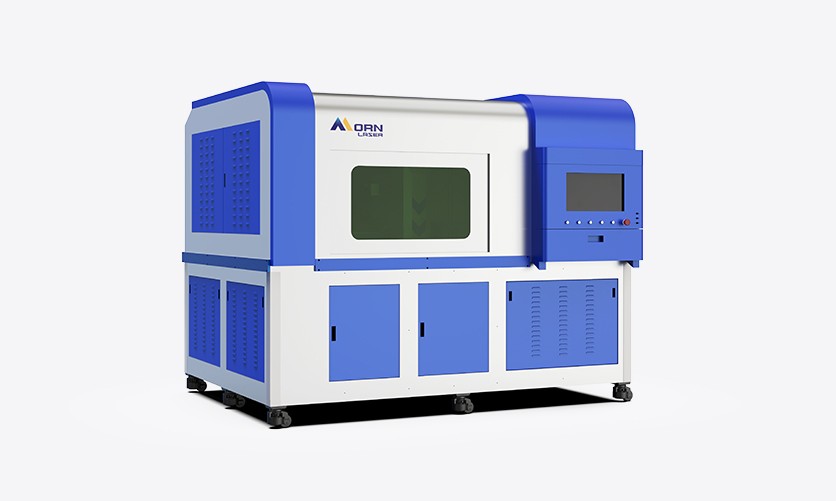-
Product
-
Fiber laser cutting machine
-
Profile Steel/ H-Beam Laser Cutter
high efficiency | high-performance | high quality -
Full Cover Fiber Laser Cutting Machine
supreme configuration | high precision | safe & pollution-free -
Sheet fiber laser cutting machine
tailor-made machine | efficiency boost -
Fiber Laser Bevel Cutting Machine
one-shot bevel | efficiency boost | streamlined process -
High precision fiber laser cutting machine
High precision | small footprint | fully enclosed -
Four-chuck Tube Cutting Lasers
truly zero-tailing | low cost per part | auto loader -
Three-chuck Tube Laser Cutting Machine
top production output | low cost per part | extremely short tailing -
Two-chuck Tube Laser Cutting Machine
top production output | low cost per part | extremely short tailing -
Full Enclosed Fiber Laser Cutting Machine
Integrated design saves installation time and shipping costs. - flexible processing | continuous cutting | efficient production
-
Fully Automatic Loading & Unloading Laser Cutting Production Line
intelligent production | optimizing factory space | reduce labor costs -
Sheet and Tube Fiber Laser Cutting Machine
supreme cost-effectiveness | dual-use laser | space-saving
-
-
Fiber laser welding machine
-
Air-cooled Portable Laser Welding Machine
more flexibility | easy to use | cost effective -
Automatic laser welding machine
fine welding seam | boosted efficiency -
Integrated fiber laser welding machine
instant welding | easy to operate & move -
Handheld fiber laser welding machine
long distance welding | multi-welding modes
-
- Fiber laser cleaning machine
- Bending Machine
-
Fiber laser cutting machine
- Solutions
- Why Morn Laser
- Price
- Contact
- VR
Menu
X- home
-
Product >
-
Top 5 Problems with Metal Laser Cutters and How to Fix Them
2024-11-21Metal laser cutting technology plays a pivotal role in precision manufacturing across industries such as automotive, aerospace, and metal fabrication. However, even the most advanced metal laser cutters can face operational challenges that affect cutting quality, efficiency, and long-term reliability.
This article explores the top five most common issues encountered in daily operations and offers practical solutions to help users optimize performance and minimize downtime.
Issue One: Material Thermal Deformation
Phenomenon Analysis:
During the laser cutting process, high localized temperatures can cause thermal deformation, especially in thin or heat-sensitive materials. This leads to warping and dimensional inaccuracy in the final product.Solutions:
Enhance Cooling Systems: Use effective water- or air-cooling systems to manage material temperature and dissipate excess heat.
Adjust Cutting Parameters: Optimize laser power, speed, and duty cycle according to material properties to balance heat input and cutting performance.
Use Physical Supports: Apply clamps or support platforms to stabilize materials that are prone to deformation during cutting.
Issue Two: Loss of Cutting Accuracy
Phenomenon Analysis:
Over time, laser cutting systems can experience mechanical wear or optical misalignment, resulting in inaccurate cuts, offsets, or distorted contours.Solutions:
Regular Calibration: Calibrate the laser head and motion system at recommended intervals to ensure accurate positioning and cutting paths.
Maintain Optical Components: Clean mirrors and lenses regularly to prevent dust and scratches from affecting laser beam quality.
Upgrade Software Capabilities: Use the latest control system software to benefit from improved motion control, nesting algorithms, and path planning.
Issue Three: Inadequate Maintenance
Phenomenon Analysis:
Neglecting regular maintenance tasks can lead to performance degradation, unexpected failures, and a shortened lifespan of the metal laser cutter.Solutions:
Establish a Maintenance Schedule: Create detailed daily, weekly, and monthly checklists for key components such as the laser head, optics, and cooling systems.
Train Operators and Technicians: Provide structured training on machine operation, diagnostics, and safety procedures.
Prepare Spare Parts Inventory: Keep essential spare parts like nozzles, lenses, and protective windows in stock to ensure quick replacements and reduce downtime.
Issue Four: Poor Cutting Surface Quality
Phenomenon Analysis:
Cut edges may show burrs, roughness, or oxidation discoloration, affecting product appearance and downstream processing such as welding or painting.Solutions:
Optimize Cutting Parameters: Fine-tune power, speed, and gas pressure based on material type and thickness to achieve cleaner cuts.
Choose the Right Assist Gas: Use pure nitrogen or high-pressure air instead of oxygen to reduce oxidation and improve edge smoothness.
Apply Post-Processing Techniques: Use mechanical grinding, deburring, or acid pickling to enhance the surface finish of cut parts when necessary.
Issue Five: Difficulty in Cost Control
Phenomenon Analysis:
High operating costs, including energy consumption, gas usage, and consumables, can significantly impact profit margins—especially in competitive markets.Solutions:
Invest in Energy-Efficient Equipment: Choose fiber laser cutters with high electro-optical conversion rates and energy-saving modes.
Negotiate Smarter Procurement: Establish long-term partnerships with suppliers to secure better prices for gas, parts, and raw materials.
Optimize Production Workflow: Implement lean manufacturing techniques and intelligent software systems to reduce material waste and machine idle time.
Conclusion
Running a metal laser cutter efficiently requires more than just high-end equipment. By understanding and proactively addressing these five common issues, manufacturers can:
Improve cutting precision and surface quality
Reduce maintenance downtime and unexpected costs
Enhance productivity and overall return on investment
Whether you're using an entry-level machine or a high-power industrial system, applying these strategies can ensure better cutting results and long-term equipment performance.
Need expert advice on selecting or optimizing your fiber laser cutting system? Contact our specialists today for personalized support.
- Office Address:
- 17F, Building 5, Qisheng Mansion High-Tech Zone, Jinan, Shandong 250101, China
- Email: info@mornlaser.com
- Mobile/WhatsApp/WeChat: +86 151 6916 6350
CONTACT USCopyright © 2008-2022 Morn Laser All Rights Reserved.![]() Get a Quote
Get a Quote
![]() Get a Quote
Get a Quote
Cookies
We use cookies to improve our services and remember your choice for future visits. By clicking "Accept cookies", you consent to the use of cookies on this website.
Read our Privacy Policy
Get a Quote x
![]()








